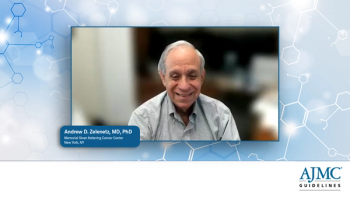
Crossover Study: Nanomicellar Cyclosporine 0.09% vs Emulsion Cyclosporine 0.05%
A panelist discusses how the COAT trial showed that switching patients with uncontrolled dry eye disease on cyclosporine 0.05% to the 0.09% solution led to significant improvements in corneal staining and symptoms by week 4, offering earlier relief than typically expected and supporting informed patient counseling.
Episodes in this series

The COAT trial, which studied the 0.09% cyclosporine solution in patients with uncontrolled dry eye disease on cyclosporine emulsion 0.05%, was an open-label phase 4 study. Patients who had inadequate control on the 0.05% emulsion for 3 months or longer were transitioned to the 0.09% solution. These patients were evaluated at baseline, then at weeks 4, 8, and 12. The study demonstrated statistically significant improvements in mean corneal fluorescein staining at each of these time points.
Improvements were observed across male and female patients, as well as in those above or below the mean age for the study. Statistically significant improvements were noted not only in total corneal fluorescein staining but also in symptom scores regardless of age or gender. The study further highlighted that the 0.09% cyclosporine solution is generally safe and well tolerated, with the most common treatment-emergent adverse events being mild onsite instillation irritation, which is a known issue with cyclosporine drops.
Regarding the speed of onset, a notable finding was the significant improvement in corneal fluorescein staining as early as week 4. This was earlier than traditionally expected in clinical practice, where improvement is often anticipated over a longer period. Corresponding improvements in visual acuity were also seen, likely due to reduced corneal staining, especially when centrally located. These findings inform clinical decision-making, allowing providers to educate patients that symptom improvement can be expected by around 1 month, with some patients potentially requiring more time. Transitioning from lower to higher concentrations of cyclosporine may lead to further symptom relief.
Newsletter
Stay ahead of policy, cost, and value—subscribe to AJMC for expert insights at the intersection of clinical care and health economics.












































